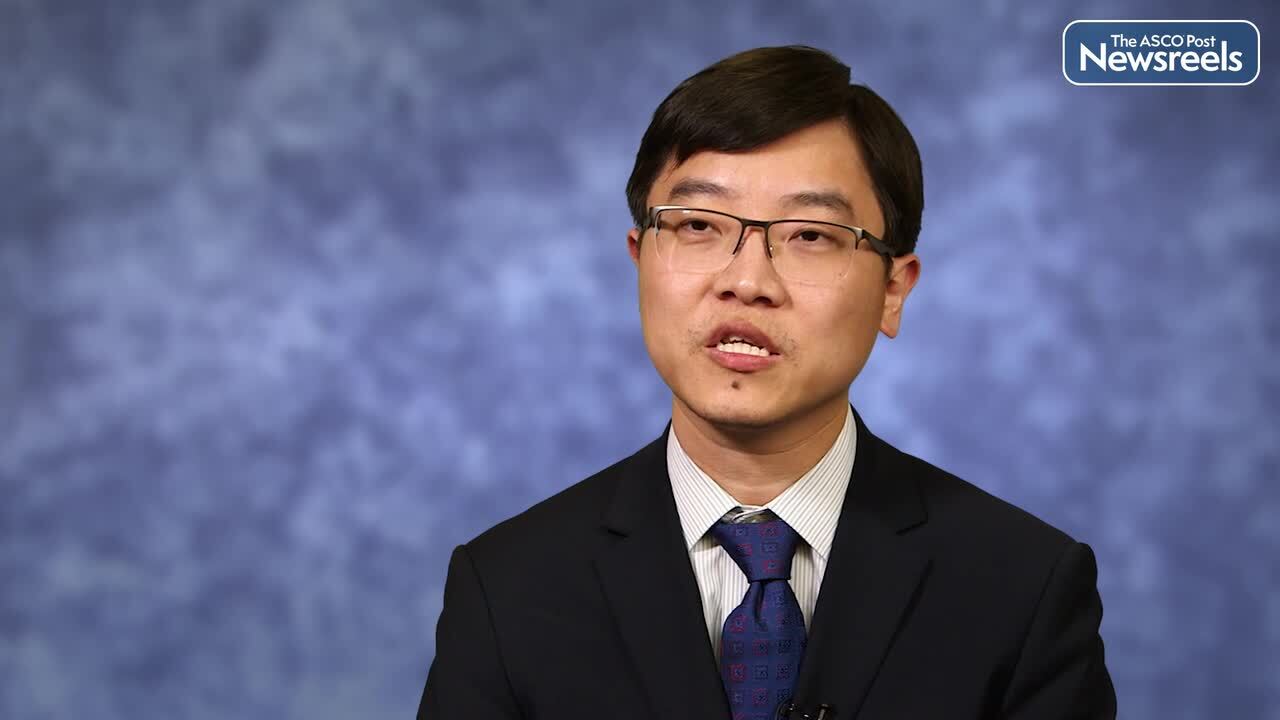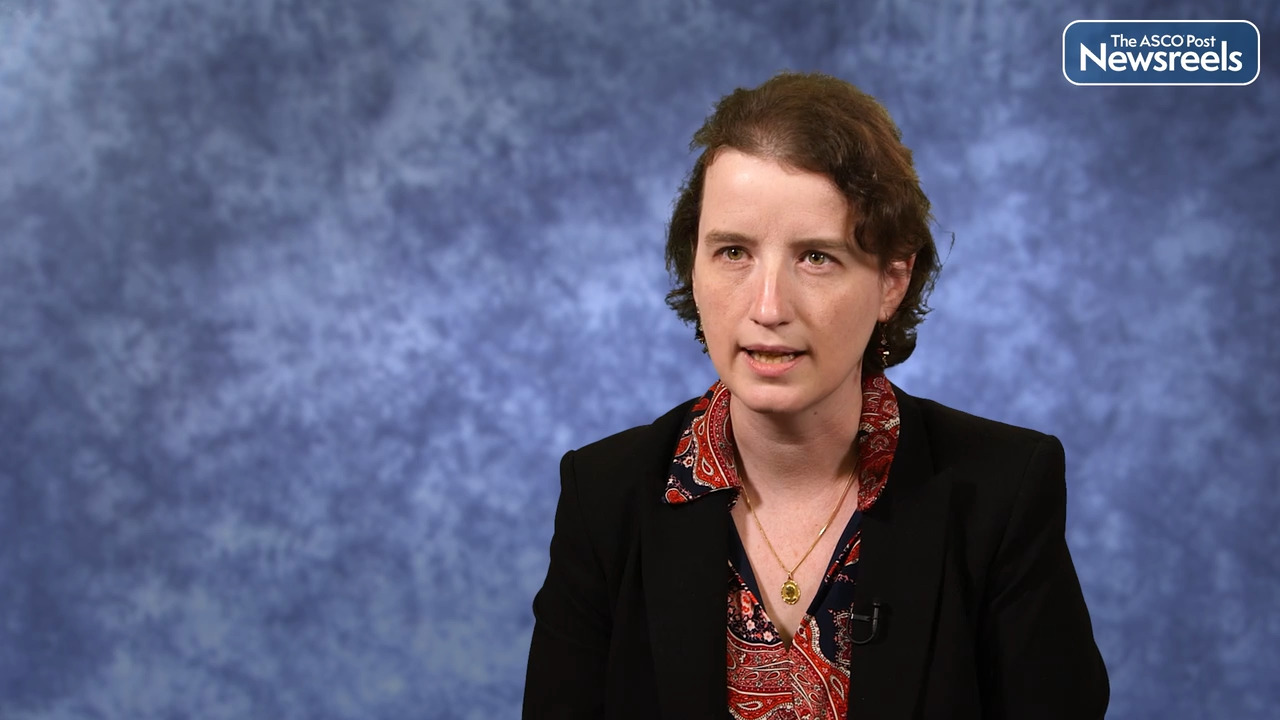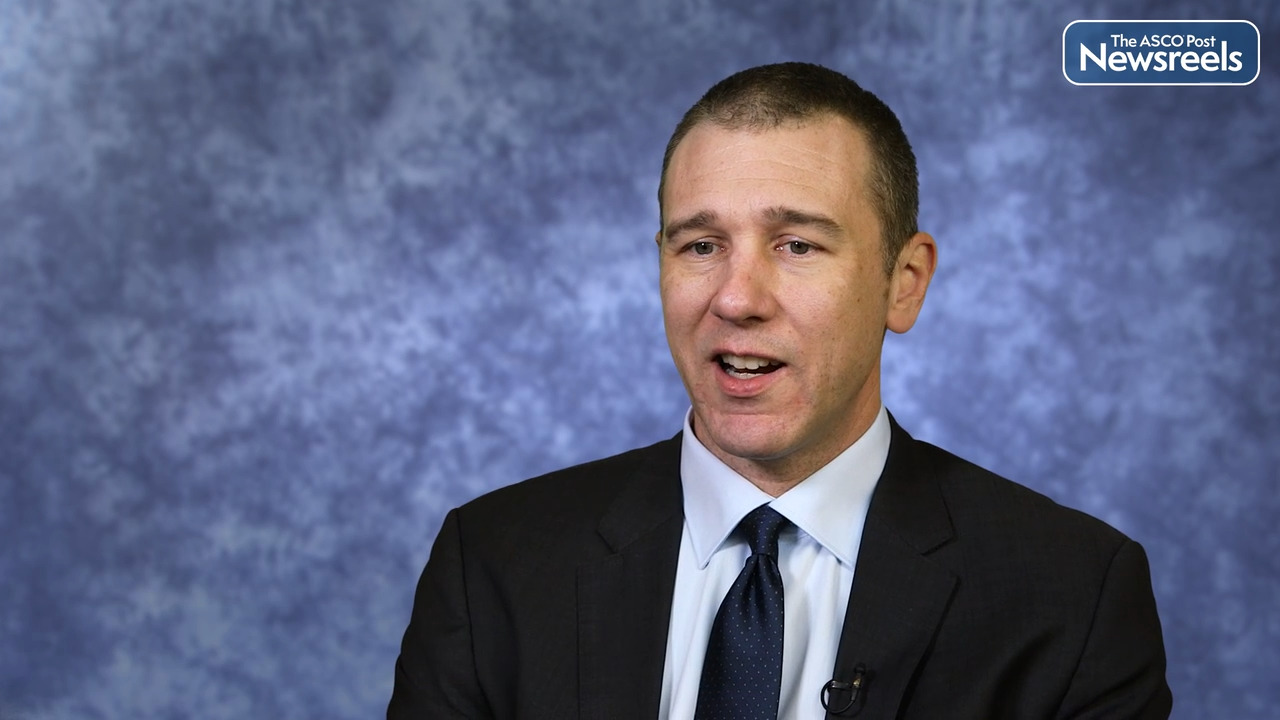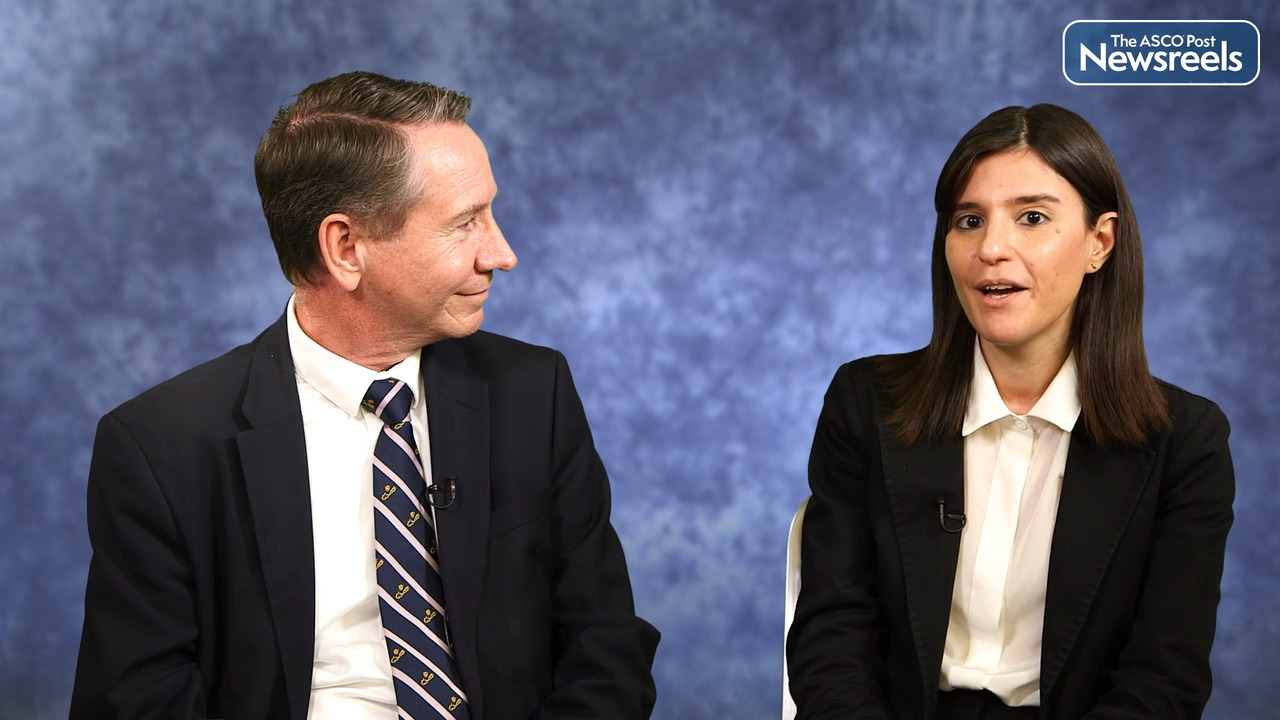Transcript
Disclaimer: This video transcript has not been proofread or edited and may contain errors.
Primary CNS lymphoma is a disease that typically involves a treatment of high dose methotrexate containing regimens, followed by consolidation. And the consolidation regimens have several options. So you can use whole brain radiation therapy or stem cell transplant or just chemotherapy alone. And in more recent years, there's been a lot of shift away from using whole brain radiation given concerns about the neurotoxicity. So there's been a shift towards stem cell transplant or even chemotherapy alone. And so at Memorial Sloan Kettering, we wanted to look into some of the practice patterns and how they've changed, and then also understand really the comparison and outcomes between these different consolidation regimens. Moreover, this disease is really thought to be multifocal in nature and basically disseminated throughout the CNS. And so what we wanted to do is see if there actually are any patients who actually have a local relapse as opposed to a multifocal failure.
So that's what we sought out to do at Memorial Sloan Kettering. We retrospectively analyzed patients treated at our institution from 1983 to 2020. So we ended up with 559 patients who had diffuse large B-cell lymphoma and who had adequate treatment information and follow-up information because importantly, we wanted to capture the pattern of disease in terms of the baseline presentation and also the relapse pattern. So these patients all had MRI. When we looked at these patients, we saw that the most common presentation was really multifocal disease, super tentorial disease, really what we envisioned when we think about this disease. We saw that there are 385 patients who went on to get consolidation regimens. And when we looked at the pattern of consolidation regimens, we saw what we anticipated. We did see a decrease in the use of whole brain radiation over the decades, even with the advent of reduced dose whole brain radiation.
So that was brought into the picture to try to reduce the neurotoxicity with encouraging results from an RTOG trial 1114. And so what we expected was that there could still be an increased use with this reduced dose treatment, but we saw reduced use of all of whole brain radiation. Meanwhile, we saw an increased use of stem cell transplant and also cytarabine or chemotherapy alone. We saw that patient associated factors were contributors to which consolidation regimens were selected. So patients who did not have a complete response to induction therapy were more likely to get chemotherapy alone as opposed to stem cell transplant. And we also saw that sicker patients or those who are older age worse performance status were less likely to get stem cell transplant. And interestingly, we account for all those patient factors and also the induction regimens that were used, we saw that there was no significant difference in progression-free and overall survival between the different consolidation groups.
And interestingly, stem cell transplant and reduced dose whole brain radiation had very encouraging results, especially in the youngest highest performance status group. And then when we looked at the disease patterns of failure, we saw that patients who achieved a complete response to their initial consolidation when they failed later on down the line, we could not predict where they would fail. They would fail multifocally, they would fail outside the side of their original disease presentation. Meanwhile, when we look at patients who have early failures, so there are 97 patients who were refractory on induction or who failed within three months of completing treatment, we saw those patients were actually significantly more likely to fail at the original side of disease. So this is really paradigm changing in this disease that has been historically considered to be multifocal in nature.
So our main takeaway is one, these modern consolidation regimens like stem cell transplant and reduced dose whole brain radiation, actually have really encouraging outcomes in this disease. And perhaps we should rethink shifting away from whole brain radiation altogether, given the encouraging results that we saw retrospectively in our data that support the use of reduced dose whole brain radiation like we're seeing on the prospective trial RTOG 114. And then finally, we do see that there is a group of patients who have early local disease relapse, and those are patients that maybe we should consider a local treatment like local radiation therapy because that also could help in terms of prolonging disease control and then also for reducing neurotoxicity. The next steps that we're going to do, so we're excited to publish our results. We're also looking at incorporating this on a prospective clinical trial using involved-site radiation therapy for patients who have early disease failure with primary CNS lymphoma. And ultimately, we see it as a bridge to other systemic therapies, even cellular therapies like CAR T-cell therapy. So we're very excited to be able to use this in the future.





